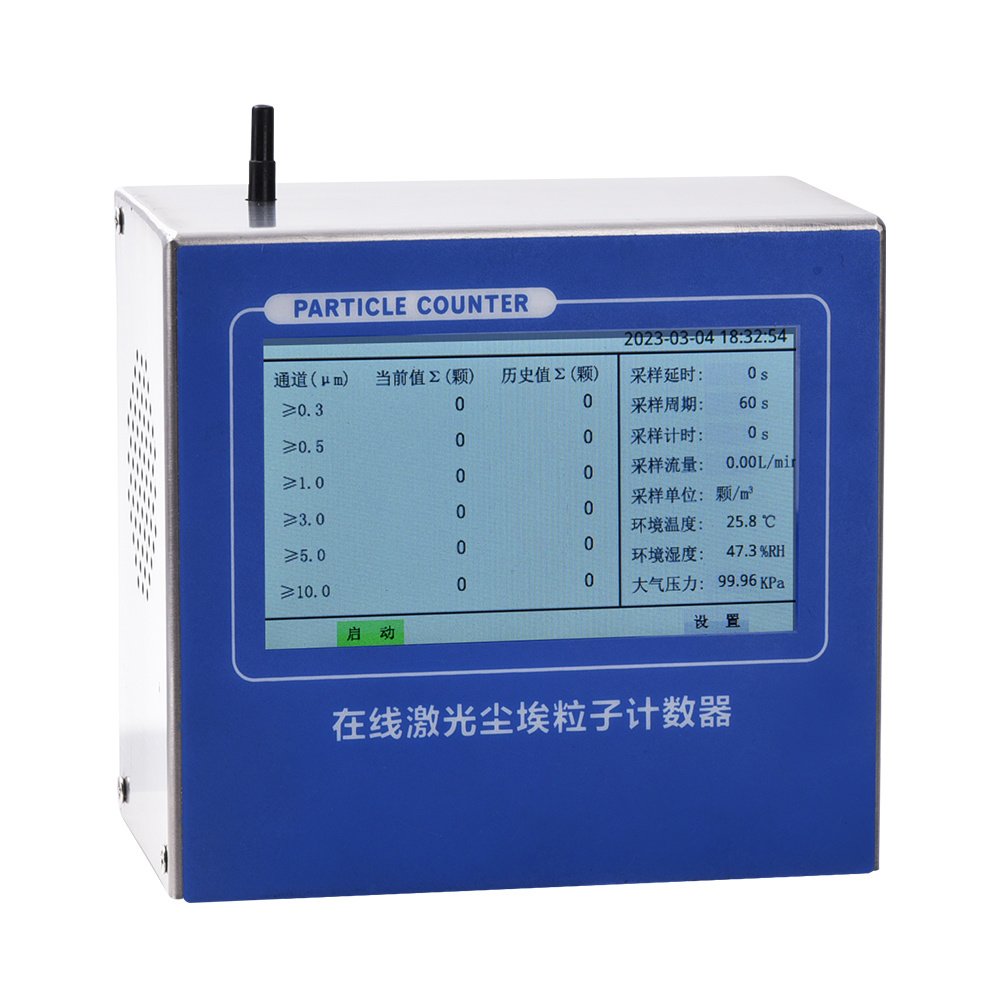As a leading expert in environmental monitoring and industrial instrumentation, I'm here to demystify the fascinating world of particle counters. These ingenious devices are the unsung heroes of air quality control, playing a pivotal role across various industries. The dust particle counters function following the steps of particle collection, illumination, scattered light, photodetectors, data processing, particle sizing, and display and output. In this blog, we'll further explore the inner workings of air particle counters and why they're indispensable in maintaining pristine air quality.
Unveiling the Dust Particle Counter
Before we dive into the technical nitty-gritty, let's start with the basics. A airborne particle counter, in essence, is an advanced instrument designed to measure the concentration of airborne particles in an environment. These particles can range from seemingly innocuous specks of dust to potential health hazards like bacteria, viruses, and pollutants.
The Crucial Function and Significance
Particulate counters are no ordinary gadgets; they serve an array of essential functions and offer unparalleled significance in various domains. Here's why they're indispensable:
Cleanroom Quality Assurance: In industries such as semiconductor manufacturing, pharmaceuticals, and aerospace, maintaining ultra-clean environments is non-negotiable. Air particle meters are the frontline warriors, ensuring that these sterile environments adhere to stringent cleanliness standards.
Indoor Air Purity: When it comes to commercial and healthcare facilities, monitoring indoor air quality is critical for occupants' health. This dust particle measuring devices provide real-time data, making it possible to identify and rectify potential air quality issues.
Environmental Vigilance: In our ever-changing world, understanding and combating pollution are top priorities. Dust meter and particle counters are vital tools in outdoor air quality monitoring, enabling authorities and researchers to make informed decisions.
Occupational Safety: In workplaces where exposure to particulate matter can be hazardous, dust count meters are deployed to guarantee that safety regulations are met.

The Mechanics Behind Dust Particle Counters
So, how do these magical devices work their intricate magic? Dust particle monitors operate on the principle of light scattering, employing the following steps:
Particle Collection: The process begins with the dust particle counter drawing in the air into a sample chamber, often through a pump or a fan.
Illumination: Inside the counter, a light source takes the stage. This source, usually a laser or LED, emits a concentrated beam of light into the sample chamber.
Scattered Light: Particles present in the air that traverse the chamber scatter the incoming light in multiple directions. Larger particles scatter light at smaller angles, while their tinier counterparts disperse light at more significant angles.
Photodetectors: Strategically positioned photodetectors within the counter capture the scattered light. These sensitive detectors are finely attuned to variations in light intensity and angles.
Data Processing: The device processes the data collected by the photodetectors. By analyzing the intensity and angles of scattered light, it determines the size and quantity of particles present in the air.
Particle Sizing: Based on the angles at which scattered light is detected, the device categorizes particles into various size ranges. Common distinctions include PM2.5 and PM10.
Display and Output: The results are typically displayed on the particle counter's screen, with some devices offering real-time monitoring. Furthermore, data can be transmitted to a computer or data logger for in-depth analysis.

Frequently Asked Questions About Dust Particle Counters
Now, let's address some of the frequently asked questions related to these remarkable devices:
How Accurate Are Dust Particle Analyzer? - Dust particle counters can provide highly accurate measurements when appropriately calibrated and maintained.
What Are the Different Types of Particle Counters? - Particle counters come in a range of models, including handheld and fixed-location units, each designed for specific applications.
Where Should You Install a Particle Counter? - The installation location depends on the application but is often found in areas of interest such as cleanrooms, HVAC systems, or near pollution sources.
How Often Should Particle Counters Be Calibrated? - While calibration frequency can vary, annual calibration is typical. However, critical applications may require more frequent calibration.
Can Portable Dust Monitor Detect All Types of Particles? - While they can detect a wide range of particles, specific sensors may be needed for certain types, like biological particles.
What Are the Limitations of Dust Particle Counters? - Limitations include the inability to identify particle composition and the need for periodic maintenance.
In conclusion, dust particle counters are the unsung champions of air quality control, safeguarding our health, cleanroom operations, and environmental well-being. Understanding the science behind these devices empowers businesses and institutions to make informed decisions about environmental monitoring and control. If you have more questions or need guidance on selecting the right dust particle counter for your needs, don't hesitate to contact us by filling out the form at your right.

